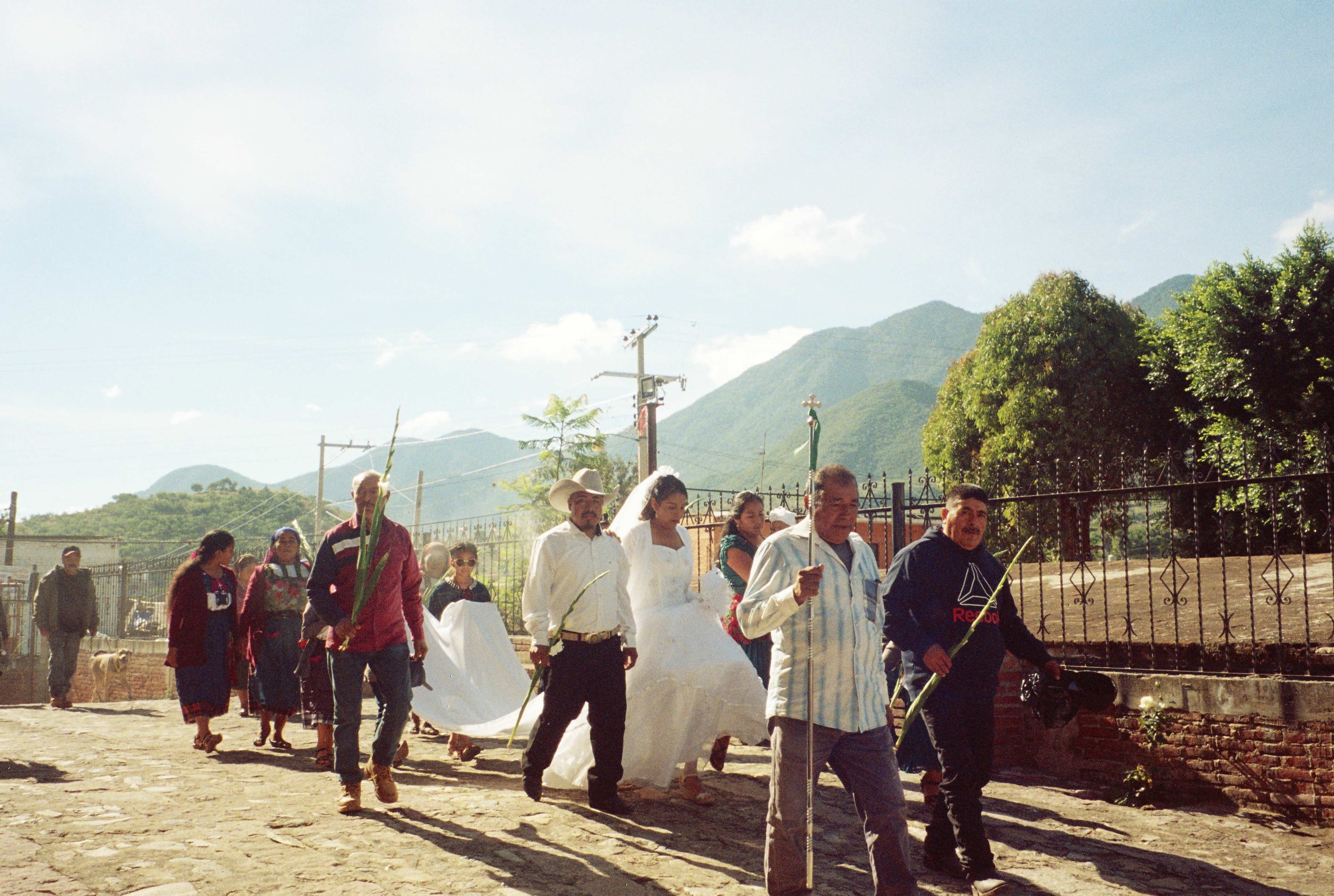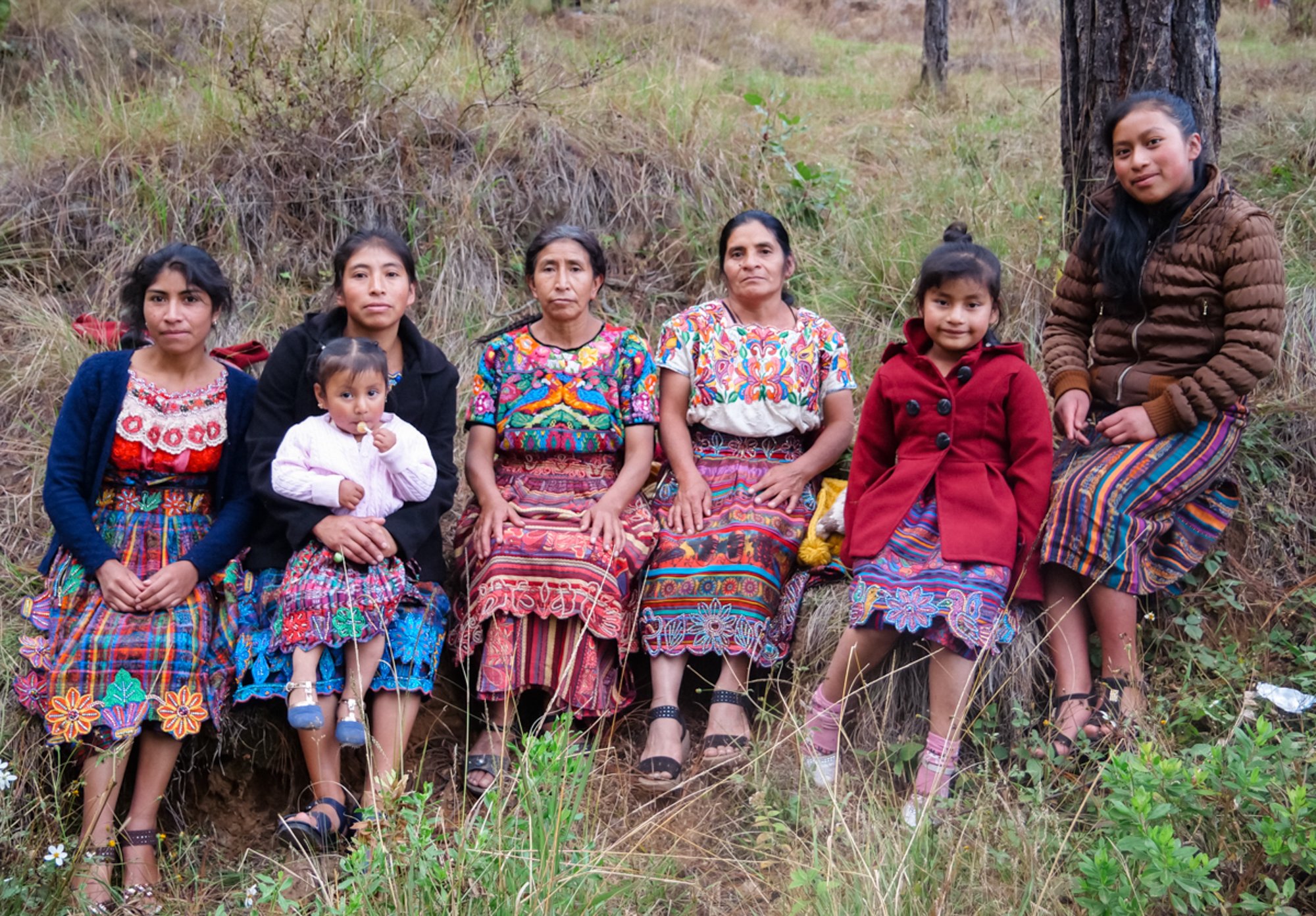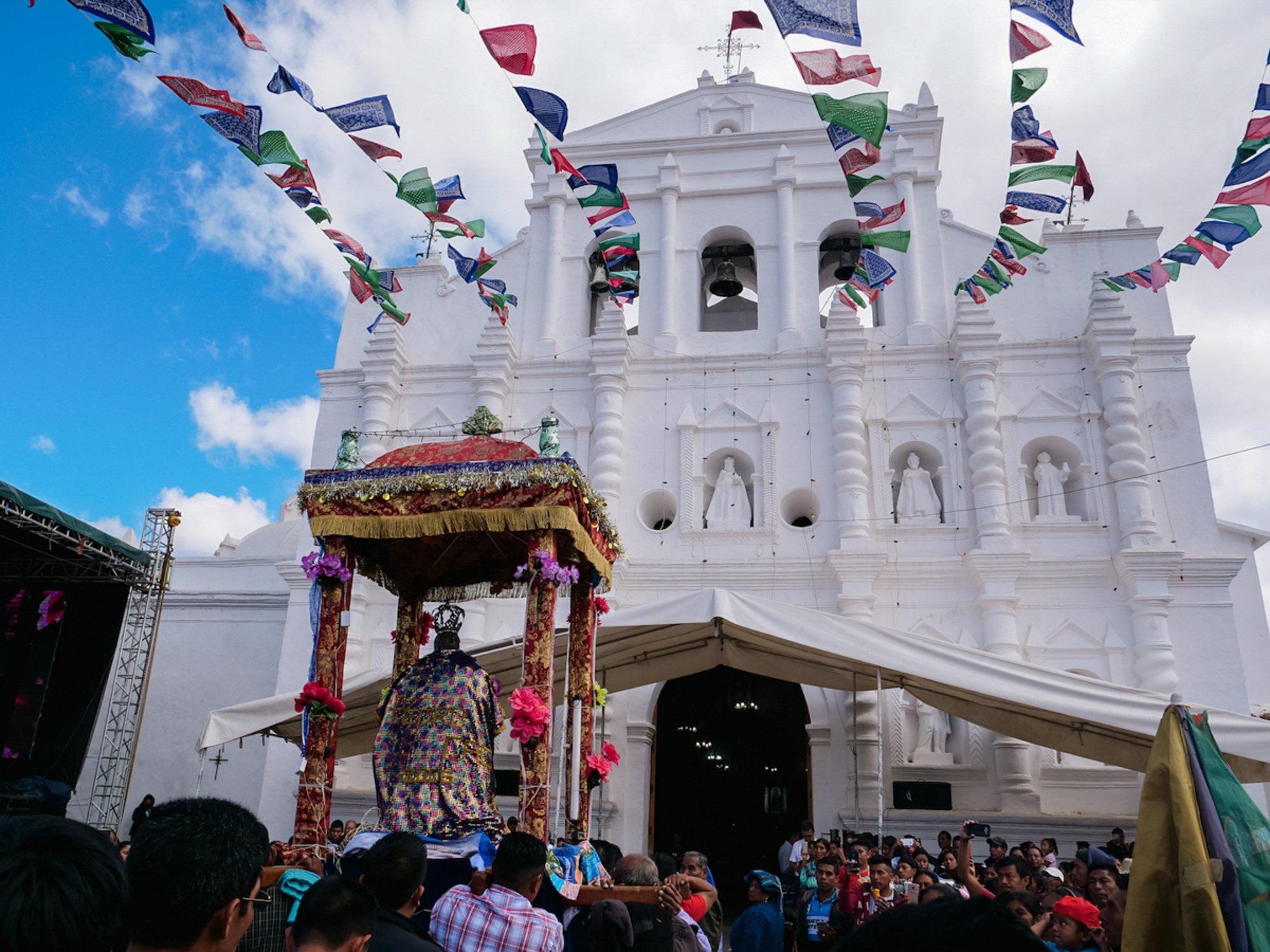

Women line up to serve male wedding guests. The image highlights the persistence of traditional conservative roles for women during traditional Zapotec weddings.

María and her younger sibling lead a procession on their way to the town’s church carrying the iconic noche buena flowers and the images of Joseph and Mary on a float.

A woman dressed as Mary leads a float carrying the Saint of Chiquimula out of the town's church.


A bride and groom exit the church and make their way towards the "padrinos" home, where guests await and a morning breakfast will be served.



An elderly woman performs a ritual cleansing of space with smoky incense at the close of mass.


A group of women works together to prepare the first phase of "higadito," (little liver) a traditional wedding dish. Inside the kitchen the women create a lively and collaborative atmosphere, laughing and gossiping as they cook. Outside, men wait for the food to be served and enjoy live music with drinks in hand, showcasing the starkly different behaviors of genders in this highly conservative society.

Women dressed in white lead a religious procession through the streets of an indigenous town in southern Mexico. Women often play a prominent role in processions and other community events in these areas, where traditional gender roles are still at large.

A bride and groom make their way to the dance floor while 'las madrinas' - older married women responsible for the bride - listen to live music. The pareo (shawl) covering their heads denotes their marital status, symbolizing the conservative gendered parameters that persist in San Bartolome Quialana, Oaxaca.

La Suegra (the mother-in-law), supervises the outdoor kitchen where women prepare food and gather in privacy to converse in the Zapotec language during a rural wedding in Oaxaca.

Tony's wistful gaze hints at anticipation as he patiently awaits his coveted slice of cake, amidst a chorus of joyful guests.



Don Juan adorns the city streets, preparing for the anticipated procession and vibrant festivities of the day.
Un Legado Cultural offers a lens into the intersection of gender, culture, and religion in patriarchal rural communities of southern Mexico. The project aims to capture the nuanced experiences of women during religious and cultural events across these regions.
The photographs depict various moments, such as a woman dressed as Mary leading a float into a local church, women preparing the traditional wedding dish known as 'higadito,' three generations of women whose partners have migrated north waiting for a procession, and a woman performing a ritual cleansing of a space at the close of mass. These images provide a visual narrative of women's roles and gender dynamics from the beginning to the end of cultural traditions. They also highlight the complex realities of migration and family structures within these communities and showcase women's symbolic and ritualistic roles within Catholicism.
Although the images feature different communities, they share a common narrative arc rooted in gendered cultural traditions and practices across generations and geographies.
This project has been featured in Marie Clarie, 2024.

